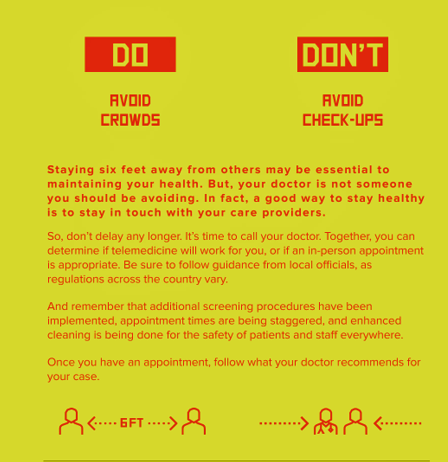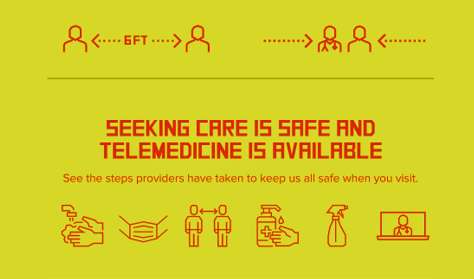“Social distancing is great. Medical distancing? Not so much,” I observe in Medical Distancing in America: A Lingering Pandemic Side Effect., my essay published this week in Medecision’s Liberate Health blog.
 Since we learned to spell “coronavirus,” we also learned the meaning and risk-managing importance of physical distance early in the COVID-19 pandemic.
Since we learned to spell “coronavirus,” we also learned the meaning and risk-managing importance of physical distance early in the COVID-19 pandemic.
But medical distancing became a corollary life-flow of the physical version, and for our collective health and well-being, it hasn’t been good for our health in ways beyond keeping our exposure to the virus at bay.
For health care providers — physicians, hospitals, ambulatory clinics, diagnostic centers — medical distancing has hit finances hard, especially among carers that are largely compensated via volume-based payments — fee-for-service. Those providers taking on more risk via value-based care contracts fare financially better in the first two years of the pandemic, based on data analyzed by Kaufman Hall and Altarum’s Health Sector Spending reports, among others tracking health care finances during the public health crisis.
Medical distancing has profoundly impacted cancer care and research, I note in my own assessment, detailing findings from the American Association for Cancer Research published in February 2022.
To learn more about and appreciate the negative impacts of medical distancing on people and health care financial management, see my post on Medecision’s website.
Thank you to Medecision for providing the platform to share this view.





 I am so grateful to Tom Lawry for asking me to pen the foreword for his book, Health Care Nation,
I am so grateful to Tom Lawry for asking me to pen the foreword for his book, Health Care Nation,  I love sharing perspectives on what's shaping the future of health care, and appreciate the opportunity to be collaborating once again with Duke Corporate Education and a global client on 6th May. We'll be addressing some key pillars to consider in scenario planning such as growing consumerism in health care, technology (from AI to telehealth), climate change, and trust -- the key enabler for health engagement or dis-engagement and mis-information. I'm grateful to be affiliated with the corporate education provider
I love sharing perspectives on what's shaping the future of health care, and appreciate the opportunity to be collaborating once again with Duke Corporate Education and a global client on 6th May. We'll be addressing some key pillars to consider in scenario planning such as growing consumerism in health care, technology (from AI to telehealth), climate change, and trust -- the key enabler for health engagement or dis-engagement and mis-information. I'm grateful to be affiliated with the corporate education provider  Thank you FeedSpot for
Thank you FeedSpot for